From the Archives, January 2018
Text by Peter Darnall and Museum Curator Lorenzo Montagner
Museum photos by Gian Maria Pontiroli
Museum Curator Lorenzo Montagner has previously written a short biography of Tazio Nuvolari which appears after the below article, in which Mr. Montagner and Peter Darnall take us inside the fascinating museum that houses Nuvolari’s treasures.
Museo Tazio Nuvolari is located in Mantua, Italy, a few miles from Castel d’Ario, where Nuvolari was born on November 16, 1892. The Nuvolari Museum is housed in an historic fifteenth century building, which served originally as the Church of the Carmelino. One visitor to the museum commented that the unique setting seemed to enhance the sense of intimacy; in his words, the museum was “much more than a collection of trophies.”
Tazio Nuvolari is one of a select few race drivers who have museums devoted solely to the celebration of their achievements. He was known as “Il Mantovano Volante” (the Flying Mantuan) or simply “Nivola” by his fans. His victories—72 major events, something over 150 competitions in all—were upstaged by the outbreak of the Second World War. Nuvolari continued to drive after the War, but advancing age and deteriorating health were taking a heavy toll. The fiery Italian survived his racing days to die of natural causes on August 11, 1953.
Ferdinand Porsche described Tazio Nuvolari as “…the greatest driver of the past, the present and the future.” Doctor Porsche knew the all the drivers who raced in the Golden Age of Grand Prix, the decade of the 1930s; in his opinion, Nuvolari was the best of them all.
Fred Russell is the curator of Jon Shirley’s automotive collection. Fred is an acknowledged expert on Italian cars, especially Alfa Romeos. He is also a self-proclaimed admirer of Tazio Nuvolari. Fred recalled his visit to the Nuvolari Museum as an unexpected pleasure. He was aware of Nuvolari’s colorful exploits and had even driven race cars which Nuvolari had campaigned. “There’s something about the building–it’s a former church—and the ambience of Mantua which impressed me. Here was the real Nuvolari,” he enthused. He summed up his visit as “truly memorable” and added that this museum is a must-see for anyone interested in motor racing history and a “near religious experience for any Nuvolari fan.”
About the Museum
The museum is open every day of the week, with the exception of Monday: Saturday and Sunday can be visited from 1pm to 6pm, and from Tuesday to Friday from 3pm to 6pm. The Museum is visited every year by 10,000 visitors from all over Europe, particularly in September when the Grand Prix Nuvolari, dedicated to historic cars, starts from Mantua: it is a very important event that brings together over 300 cars from all over the world from Europe to Latin America, from Japan to the United States of America.
There are many activities organized in the museum, from book presentations and photographic exhibitions to educational activities specifically designed for children. Road education courses for children are also part of the activities.
Images that tell the life of Tazio Nuvolari, as well as his personal items, the trophies and medals won on all the European and American tracks decorate the museum.
Among the most precious trophies are the Mille Miglia Cup of 1930, the Adolf Hitler Cup won by Nuvolari on the Nurburgring circuit in 1935 and the small-scale copy of the Vanderbilt Cup won at the Roosevelt Field circuit in New York in October 1936. There are many cars related to the career of Nuvolari that are on display during the year: in the coming months we expect the arrival of a splendid 1930 Alfa Romeo 1750 GS Zagato.
Staff and support
The Museum is financed by tickets sold to visitors, merchandising activities, and thanks to the generosity of sponsors. But the museum also needs staff with a great passion: Lorenzo Montagner is the curator and head of the Tazio Nuvolari Museum who also creates new ideas to make the visitor’s journey through the Museum more enjoyable. Mr. Matteo Rinaldi takes care of the ticket office, the secretariat and the administration and Mr. Franco Mondadori is the technical manager.
The Tazio Nuvolari Museum is owned by the Automobile Club of Mantova which is fundamental to the efficiency of the Museum, as are the roles of the Director Dr. Giuseppe Pottocar and of the President Dr. Giancarlo Pascal, and Mrs. Silvia Bellini, secretary of presidency of the Automobile Club Mantova. Their work is fundamental because thanks to their expertise, they help the Museum staff in the planning of international events for the promotion of Tazio Nuvolari and his Museum throughout the world. Studies are being made about the feasibility of bringing a Nuvolari Exhibition to the most important circuits and cities of the world; one of these could be organized in New York.
New Activities
In recent months the Museum has signed agreements and completed very important activities: a educational section was created to tell the story of Tazio Nuvolari to school children; a new website will be created and the social media channel will be enhanced. A collaboration agreement was signed with the Vittoriale degli Italiani (one of the most important Italian museums in the past the home of the poet Gabriele D’Annunzio.) Soon, a collaboration will be signed with Università Politecnico of Milan for the creation of a new museum itinerary based on innovative technologies, and thanks to the Municipality of Mantua, the patrimony of letters, documents and photographs belonging to Nuvolari will be restored and digitized.
Nuvolari’s Photography
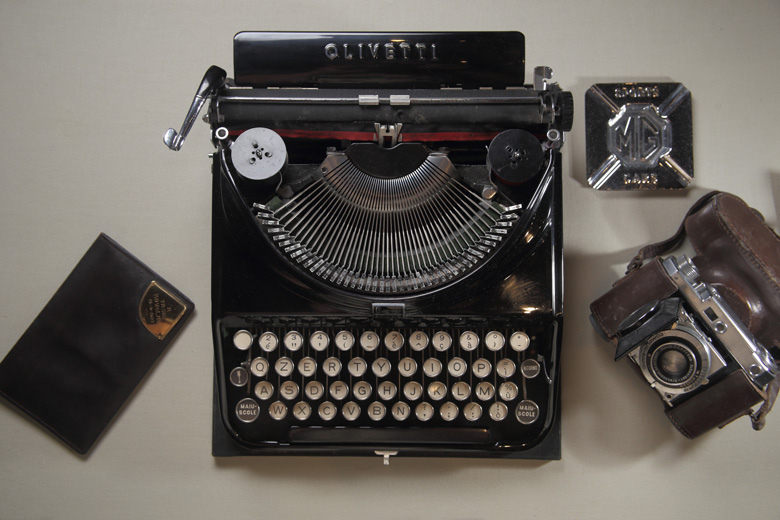
Personal objects from Tazio’s studio. Among his favorite objects, the camera with which he took wonderful images that have become an exhibition and a book entitled “When Nuvolari Shoots”.
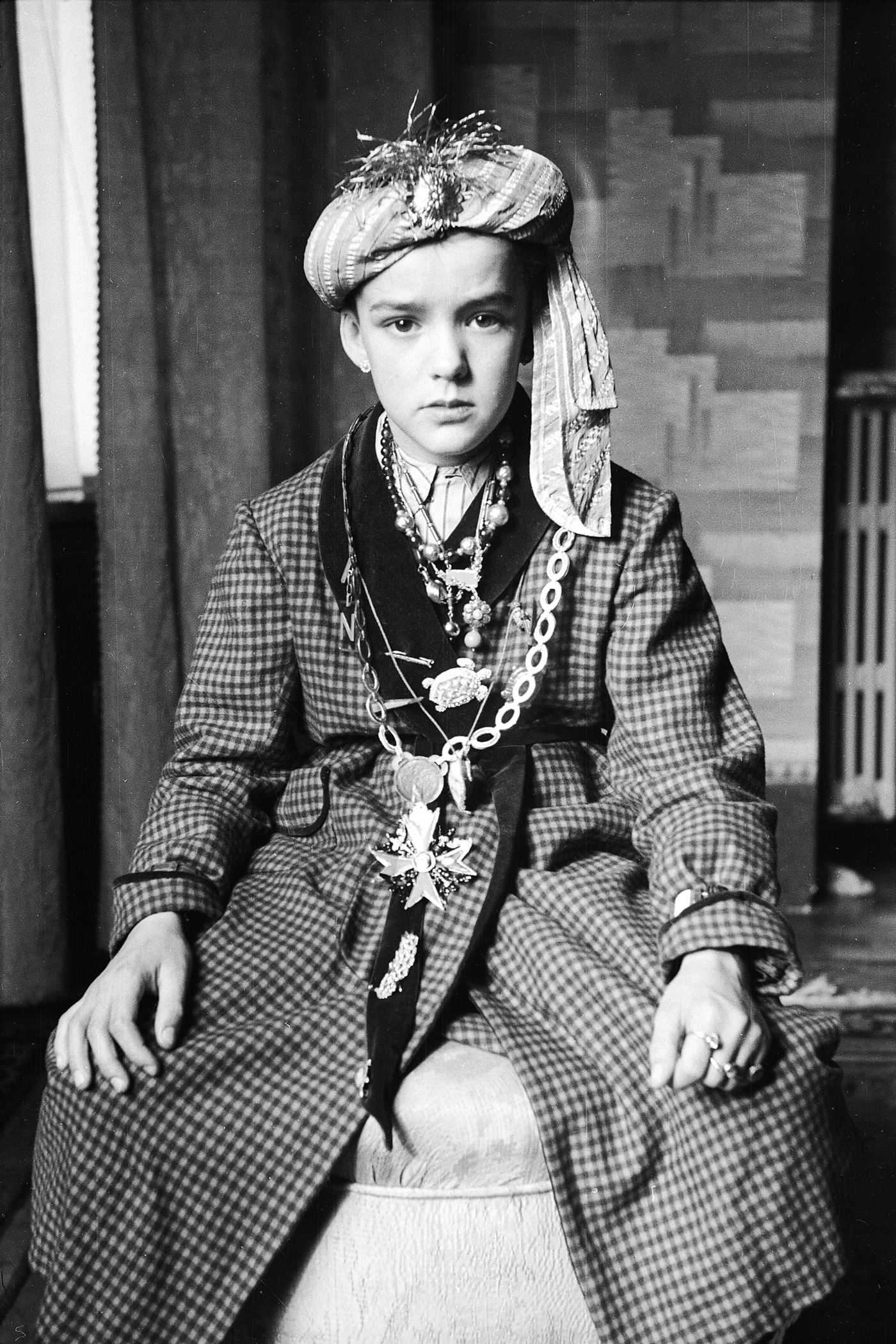
Tazio possessed a real talent for photography and strengthened his passion after the death of his first son Giorgio in the days before the Vanderbilt Cup edition 1937. After the death of Giorgio, Tazio became more taciturn and thoughtful, letting the photographs tell the story his state of mind. It is evident from his photographs, of over 2,500 images how great is his ability, in seeking a light that could highlight a detail of a face. Here is has taken a photo of his son Alberto. Photo courtesy of the Archive Tazio Nuvolari Museum
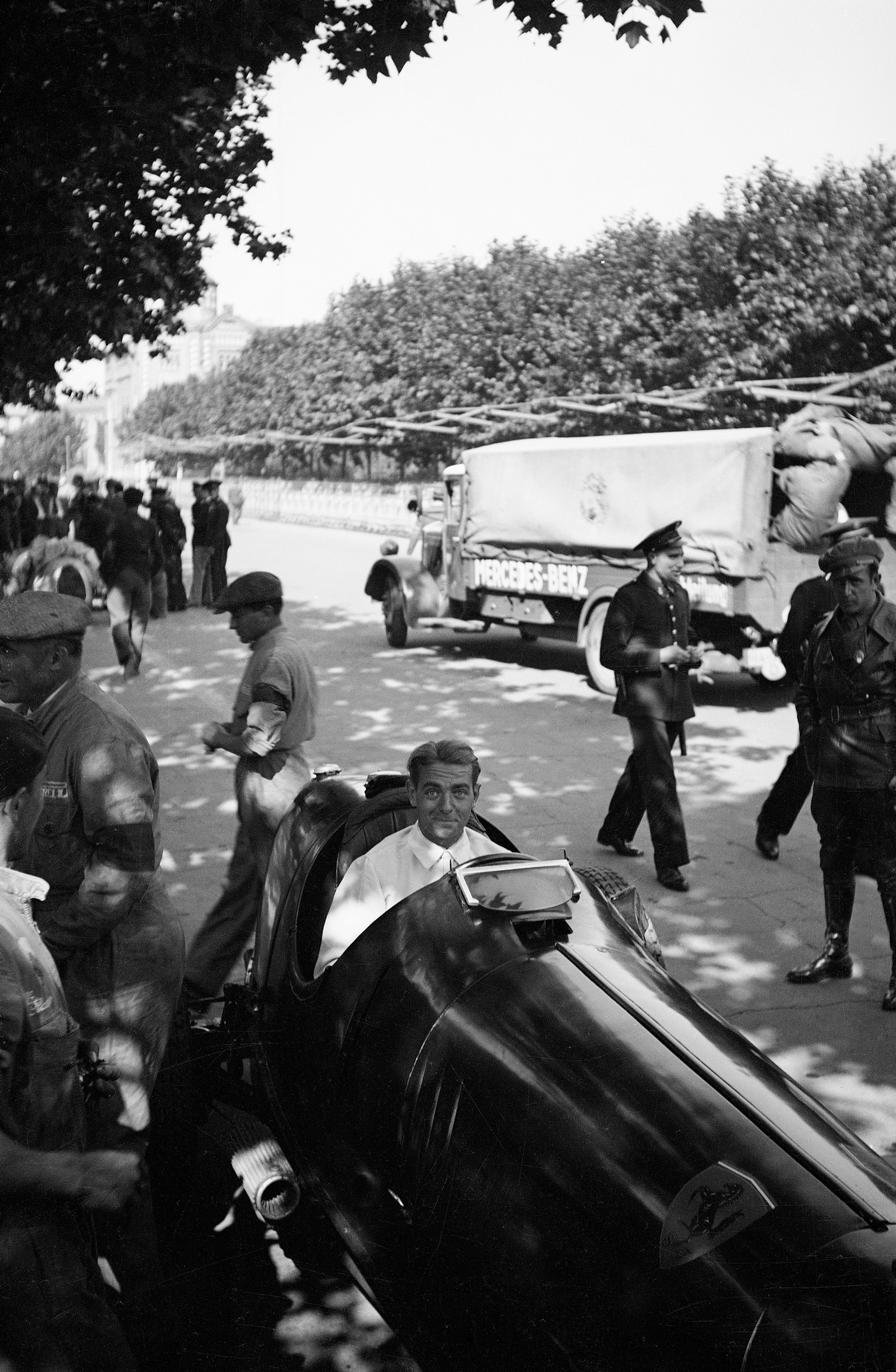
But Tazio has also been able to tell the world of racing by taking photographs even to his rivals. Another photograph taken by Nuvolari shows Nuvolari’s friend and rival of the Auto Union team, Bernd Rosemeyer, who during a test before a Grand Prix slips into the cockpit of Tazio’s Alfa Romeo. Photo courtesy of the Archive Tazio Nuvolari Museum
Trophies
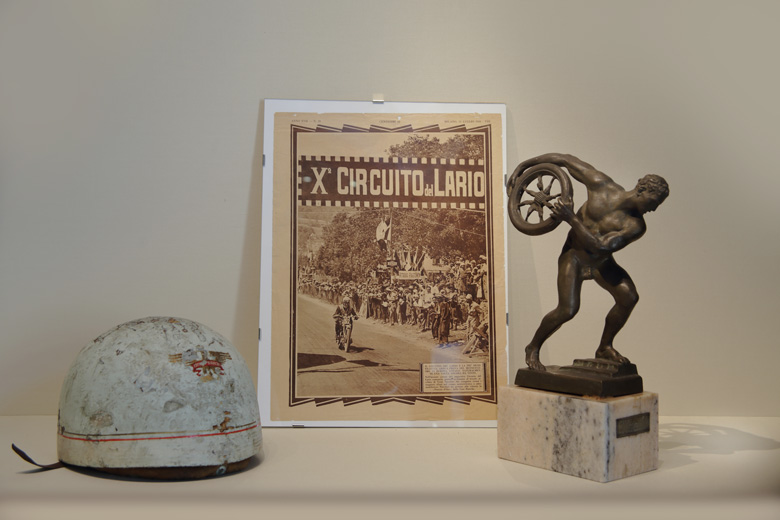
Motorcycle section: Nuvolari’s helmet with Bianchi logo and the Circuito del Lario Trophy. The legend of Tazio begins with the first motorcycle race in the summer of 1920.
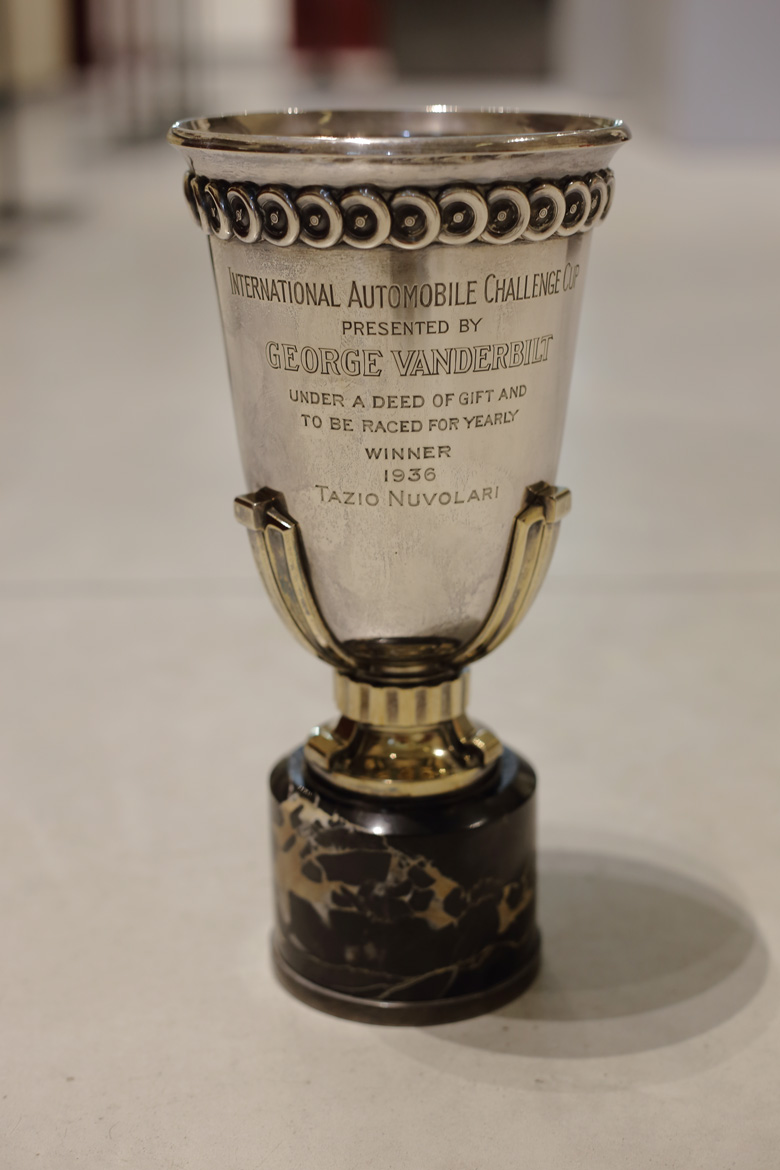
Trophies: the copy of the Vanderbilt Cup won by Nuvolari with Alfa Romeo in October 1936. The original Cup is now kept in the Nicolis Museum in Villafranca (Verona) near Tazio Nuvolari Museum.
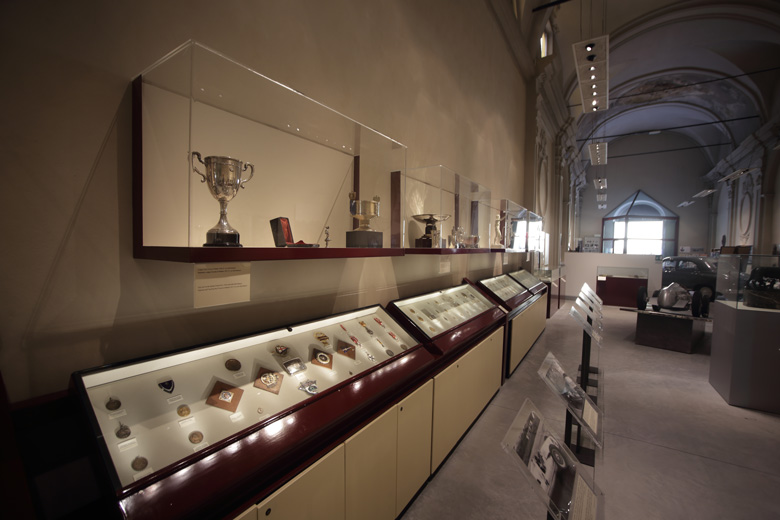
In the medal collection are dozens of medals and honors received by Tazio Nuvolari from all over the world..
Cars and related objects
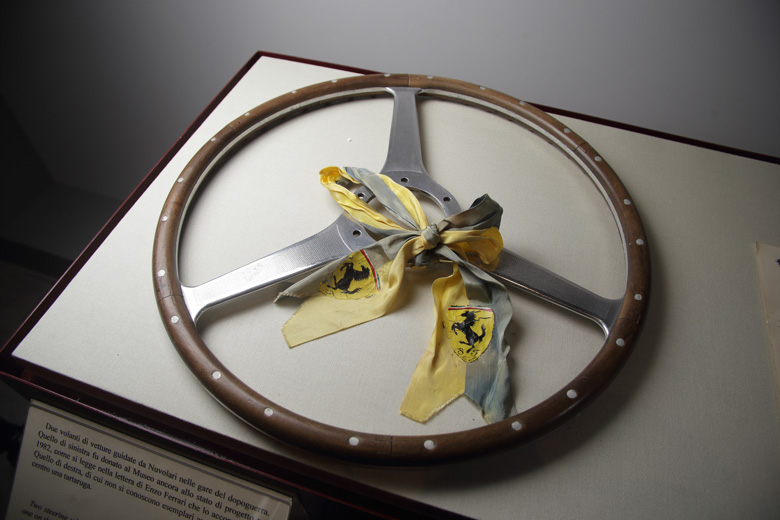
The steering wheel of the Ferrari 166 SC used by Nuvolari during Mille Miglia of 1948. This steering wheel was donated by Enzo Ferrari to ACI Mantova in 1982. The Ferrari scarf tied to the steering wheel is a very high honor awarded to a select few by Enzo Ferrari.
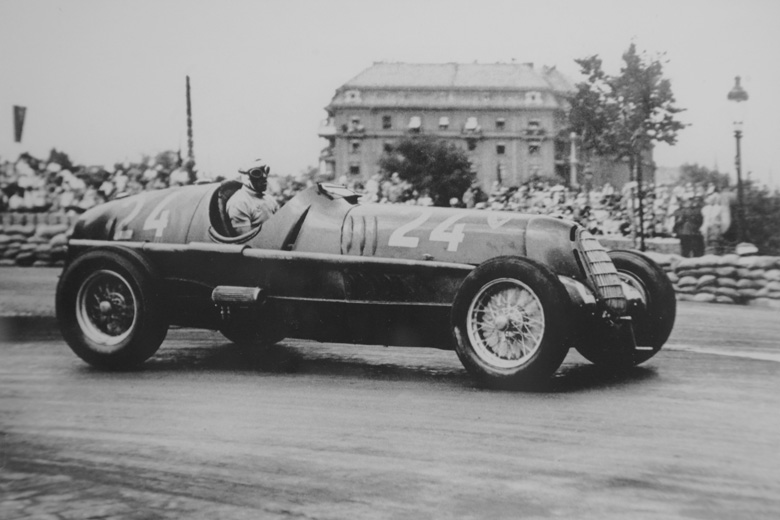
There are many photos of Nuvolari’s racing history. This is at Barcelona 1936, Tazio and the Alfa Romeo 12C-36. The link between Nuvolari and Scuderia Ferrari’s Alfa Romeo was very strong, a “marriage” that was interrupted when Tazio moved to Auto Union.
General
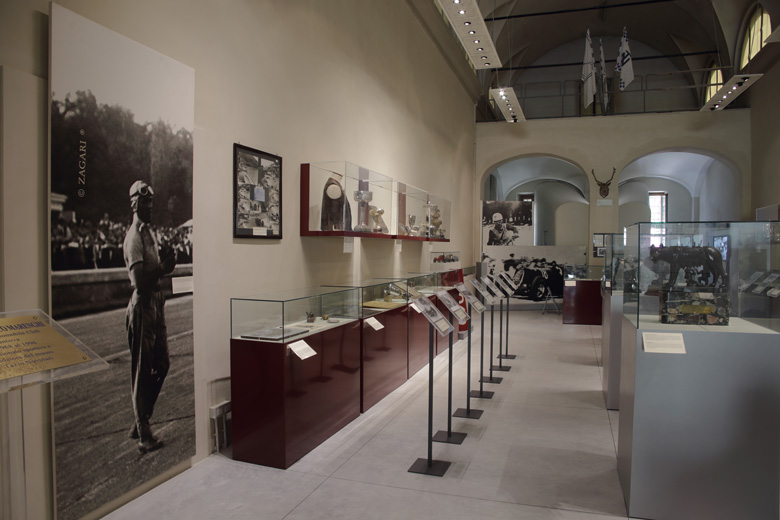
A view of the Tazio Nuvolari Museum: not only trophies, medals and cars but also a large collection of clothes used by Tazio during the races.
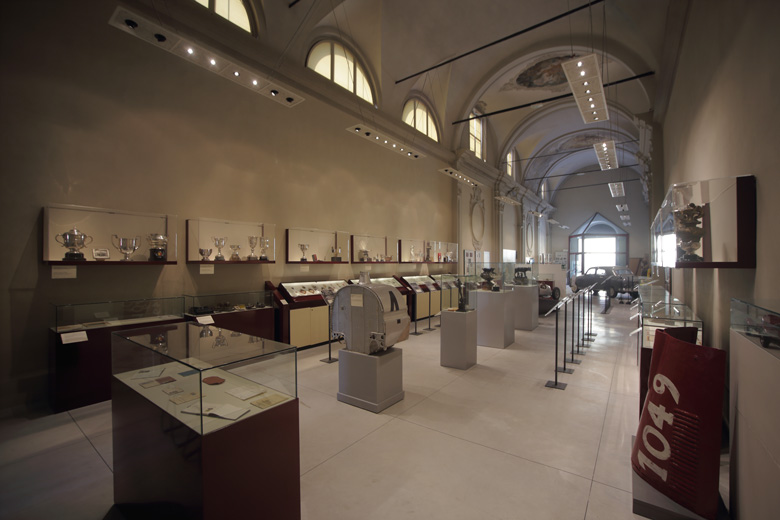
The Nuvolari museum is visited by 10,000 visitors a year coming from all over Europe, but also from Japan, United States and Latin America.
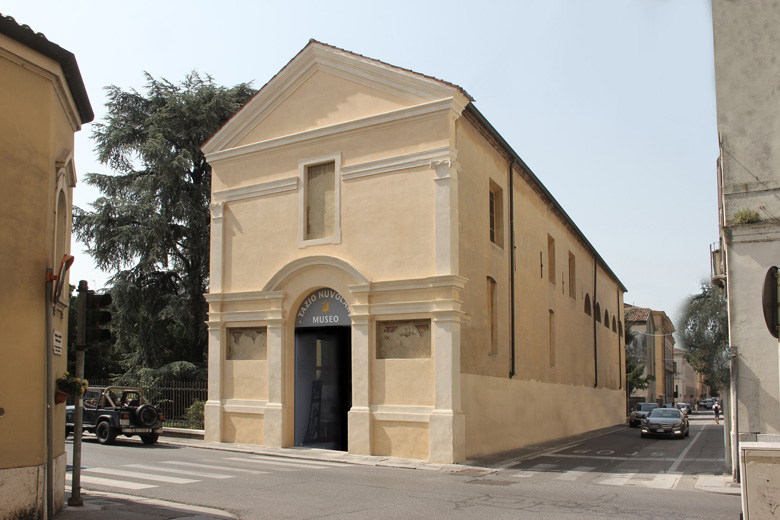
The entrance to the Tazio Nuvolari Museum. Until about ten years ago it held the archive of the Municipality of Mantua.
There have been many authoritative works documenting the extraordinary career of the great Italian race driver Tazio Nuvolari. The word “authentic” was used in this original article submitted by Lorenzo Montagner, who is the curator of the Tazio Nuvolari Museum in Mantua, Italy and could, therefore, be considered an authority on the subject of Tazio Nuvolari. Authentic, indeed.
Lorenzo Montagner writes from the perspective of an Italian enthusiast as well as a scholar. He takes pride in the history and the charm of the area which gave Nuvolari his epithet “The Flying Mantuan.” We chose not to change a single word of his manuscript.
– Pete Vack and Peter Darnall
By Lorenzo Montagner, Administrator and custodian of the Tazio Nuvolari Museum
Color photos by Gian Maria Pontiroli
Owned by the Automobile Club di Mantova, the Tazio Nuvolari Museum is situated in Mantua: the city is a small but wonderful peninsula surrounded by three artificial lakes located in the heart of the Po valley (Pianura Padana) between Milan and Venice. Mantua was the home town of the poet Virgil, a territory that blends together water, ground and sky. Under the duchy of the Gonzaga family, between the middle of 1300s and the beginning of 1700s, Mantua hosted renowned artists like Andrea Mantegna, Leon Battista Alberti and Giulio Romano who contributed to the transformation of the town in one of the gems of the Italian Renaissance.
Son of good Mantuan blood
The memorabilia of Tazio Nuvolari are conserved in the heart of the city, surrounded by the silent walls of the former Carmelino Church: trophies, medals, photographs and personal belongings narrate the life of the “Flying Mantuan”, a nickname coined by the poet Gabriele D’Annunzio for Tazio Nuvolari. Tazio was born in 1892 in Castel d’Ario as the son of a wealthy family of landholders, just a few acres away from the birthplace of Antonio Ascari, champion racing driver of Alfa Romeo in the 1920s and father of the Formula 1 driver Alberto. In this settings, Tazio understood that his vocation was speed; in fact one day he said: “I have never dreamt of fairy tales or pirates adventures; I have always and only dreamt of speed”. Son and grandson of two cycling champions, Tazio was initially fascinated by the motorbikes owned by his uncle Giuseppe when he first rode them at the age of ten. Anyway, the true passion of Nuvolari turned to be flying and a few years after the invention of the Wright brothers he succeeded to purchase a Blériot aircraft which he assembled himself and managed to take off from the roof of his house in the early 1910.
“Driving is not for you!”
Wandering in the Tazio Nuvolari Museum is a journey back in time. Nuvolari participated in the Great War as ambulance driver. One day, coming back from the front, Nuvolari accidentally swerved the lorry he was driving and the lieutenant suggested him to give up: “Driving is not for you!”. His career stated on 20th June 1920, at the age of 28, when he participated to a motorbike race riding a Della Ferrera Corsa. In the meantime, he also started to race on cars and even if the first years were poor of satisfactions, Tazio was a genuine show to watch: he succeeded to obtain his first automobile race victory on 22nd May 1921 in Verona driving an Ansaldo 4CS, and his first bike race victory was in Mantua itself riding a 998cc Harely Davidson FS Twin. Between 1920 and 1930, he alternated races on car and bike becoming known as the “Campionissimo” (“Super champion”) with a 350cc Bianchi “Freccia Celeste” beating his rivals riding 500cc European bikes. Victories in car races were late to come and struggling to find a racing team, in the winter between 1927 and 1928, he founded the Scuderia Tazio Nuvolari: he was one of the first drivers to found one using his own name.
Among all drivers, Tazio is recognizable from a distance: he is a short man but full of energy and strength with fire in his eyes. He is a driver that meticulously prepares and sets his car, he leaves nothing to the chance, and he even conceives his own livery that will never abandon for the rest of his career: from the typical trousers of a horse rider with Missoni style sweaters of the early 1920s to the blue trousers with lemon yellow shirts. He is also a magnificent manager finding personal sponsors and he negotiates rewards with race organizers, but this is not enough to hit the big time. In 1930 the turning point comes: Enzo Ferrari wants Tazio Nuvolari to drive the Alfa Romeo cars of his racing team. This is the beginning of an incredible story made of victories and arguments but also of humanity and brotherhood between two of the most charismatic characters of the Italian Twentieth Century.
“To the fastest man, the slowest animal”
The Nuvolari Museum conserves an inscription by the poet Gabriele D’Annunzio. In 1932, the year that corresponds to the victory of the European Championship of Formula Grand Prix, the poet donated to Nuvolari the famous turtle icon. This small jewel became a sort of amulet for the driver: a symbol to print on his letterhead, a brooch to pin his tricolor foulard, a logo to show on his private aircraft. At this stage, Tazio Nuvolari is the “new man” that domesticate the speed and that sets the fading of the European romantic man of the end of the Nineteenth Century. Several trophies are displayed among all the items of the museum: one in particular tells a story that sounds still incredible more than eighty years later. Tazio is waiting on the starting grid of the German race track in Nürburgring, he is the only one with an Alfa Romeo, racing against five Mercedes and four Auto Union. In those moments, Tazio spots the only Italian flag in the crowd among thousands of German ones; he notices that this lonely flag looks worn out and calls Nello Ugolini, the executive director of Scuderia Ferrari: “Nello, please make change that flag because it’s worn out, today I will win!”.
Tazio engages a fight that lasts almost five hours: much more is the engine horsepower of the German cars, as well as more advanced is the technology of the Reich automobiles with respect to the Alfa Romeo one. Nevertheless, Nuvolari succeeds in overturning the odds of the race by driving with his own distinctive style, by fighting like David against Goliath. In the last lap, when 200,000 Germans with the right hand up in the Nazi style are waiting for the Mercedes driven by von Brauchitsch, here it comes the Alfa Romeo of Tazio in first place crossing the finish line and winning an impossible race. It is 28th July 1935 and Tazio wins a trophy with the representation of the Roman god Mercury on a base with the name of Adolf Hitler.
A tragic destiny
A section of the Nuvolari Museum is dedicated to his family: to his wife Carolina and to his sons Giorgio and Alberto. By looking through the life of Tazio one gets the impression to sit in front of a movie script with a tragic side. The champion that bends the corners of race tracks as he wishes, becomes suddenly powerless in front of the destiny that takes away from him both his sons: Giorgio and Alberto die of illness about 10 years apart from one another, when they are 18 years old. While Tazio is pushing his luck on the race track, his most precious gifts are taken by illness.
Giorgio dies at the beginning of the summer of 1937 while Tazio is travelling to the USA to race for the Vanderbilt trophy; Alberto dies in the spring of 1946. From that day on, Tazio becomes even more a man of few words. Before the outbreak of World War II, Tazio leaves Alfa Romeo to join the futuristic Auto Union; the partnership, sealed by a conspicuous contract of 1,200,000 Reichmark, produces only three victories: the Italian Gran Prix and the English Gran Prix in 1938 and the Belgrade Gran Prix in 1939. He starts racing again in 1946 but he is only the shadow of the great champion of the past.
He is dejected because of the death of his sons, and even if he doesn’t win many competitions he is still on everyone’s lips: during the Mille Miglia race in 1947 (a single day car race starting from Brescia towards Rome and back to Brescia) in Turin Nuvolari keeps driving his small 1100cc Cisitalia against a powerful 3000cc Alfa Romeo; only an exceptionally heavy rain stops him during this endeavor and he places second. The year after, Enzo Ferrari convinces him to participate to Mille Miglia with a Ferrari 166 SC. The courage of Tazio is incredible and after more than a 600 miles racing with a damaged car, he is 23 minutes clear ahead of his teammate driving the same Ferrari model. Along the roads, the crying Italian crowd is greeting Nuvolari who is desperately driving towards the finish line now without the hood to protect the car engine. Unfortunately, when just a few hundred miles are left to the finish line, Enzo Ferrari imposes Tazio to stop. That day he lost the Mille Miglia but he won immortality. The car hood that Tazio lost during that race is today displayed in the Nuvolari Museum as a memory of that unforgettable day.
Tazio kept racing until his last appearance in 1950 at Silverstone, UK on a Jaguar XK120. At the early hours of the day 11th August 1953 Tazio passed away and “took off to race even faster in the highest ways of the sky”.
Ferdinand Porsche called Tazio “the greatest of the past, the present and the future” and to remember this great champion the Nuvolari Gran Prix is held every year in Mantua since 1991 organized by Scuderia Mantova Corse: a fabulous event, one of the world most prestigious road races together with Mille Miglia, that gathers every year more than 330 historic automobiles coming from all over the world. To promote the emblem of Nuvolari on the most famous race tracks of the world, the Scuderia Tazio Nuvolari Italia was founded in 2016. Even if very recent, in such a short time this organization has already gathered the interest of car enthusiasts, drivers, riders and other characters of the world motorsports, also from the USA and the UK. Some of them have participated with their personal cars to the 75th Members’ Meeting in Goodwood.
Web sites: www.tazionuvolari.it, www.gpnuvolari.it, www.scuderiatazionuvolariitalia.it
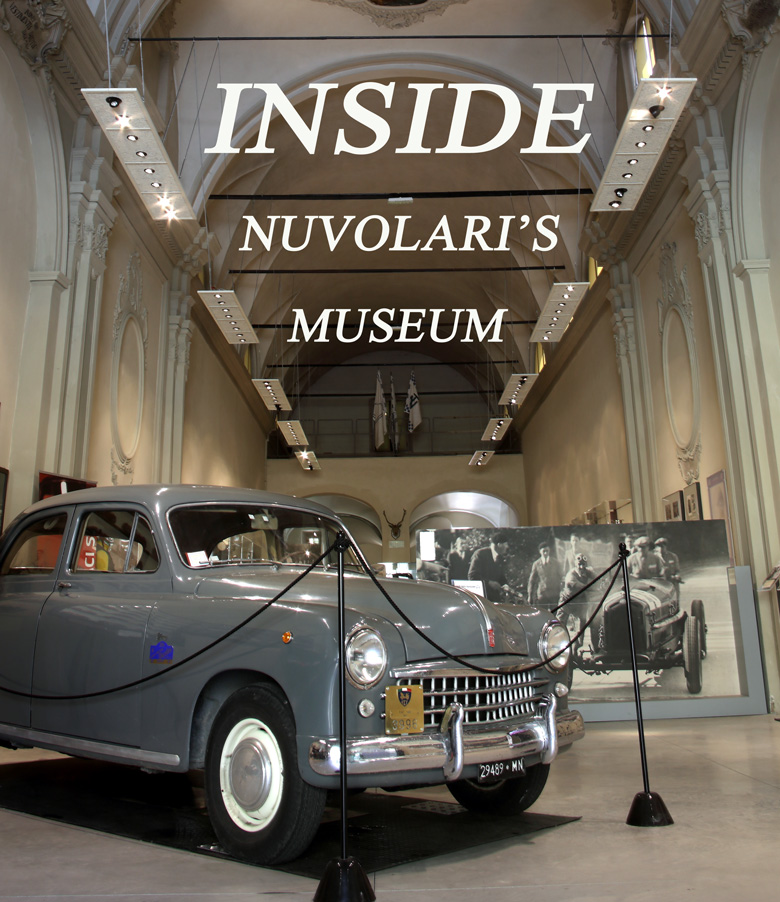
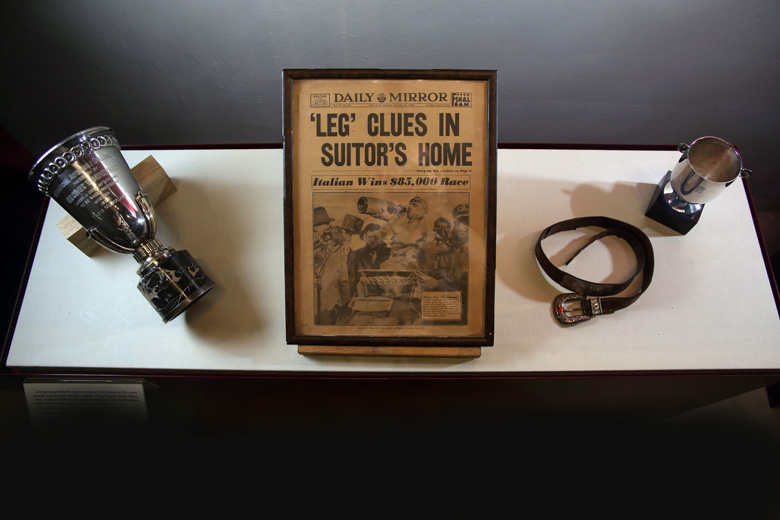
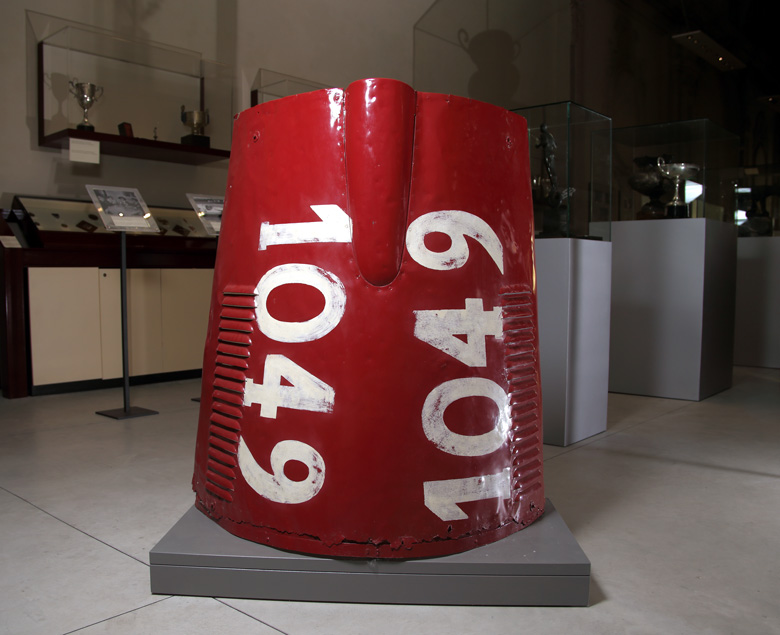
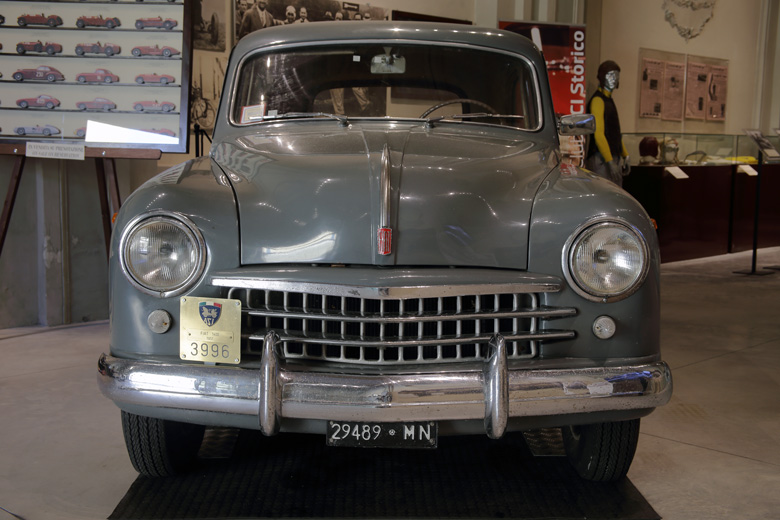
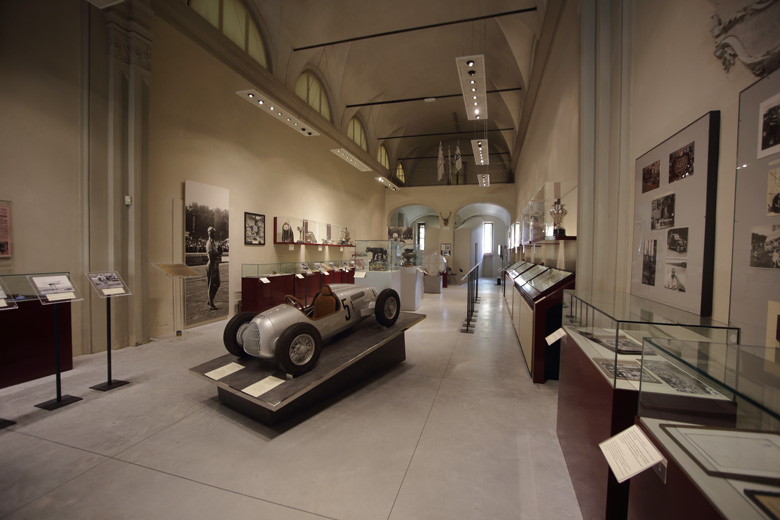
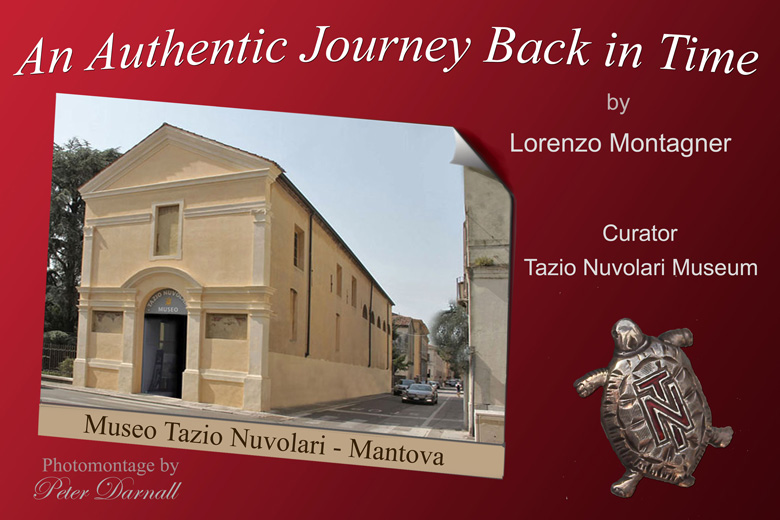
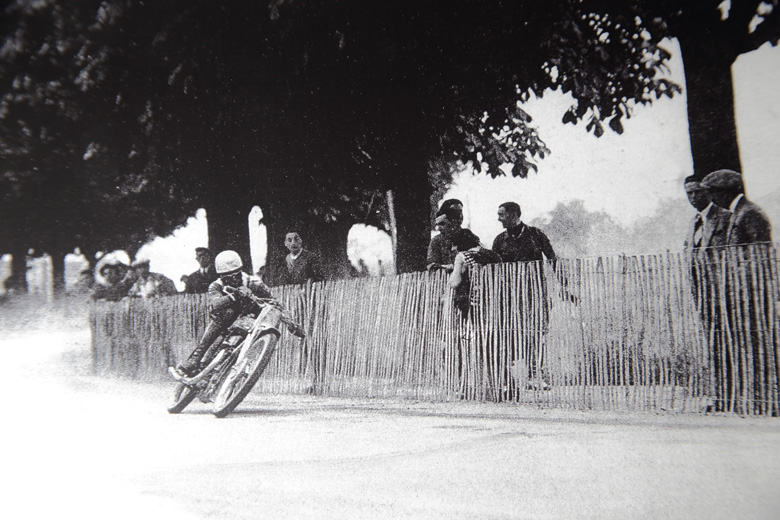

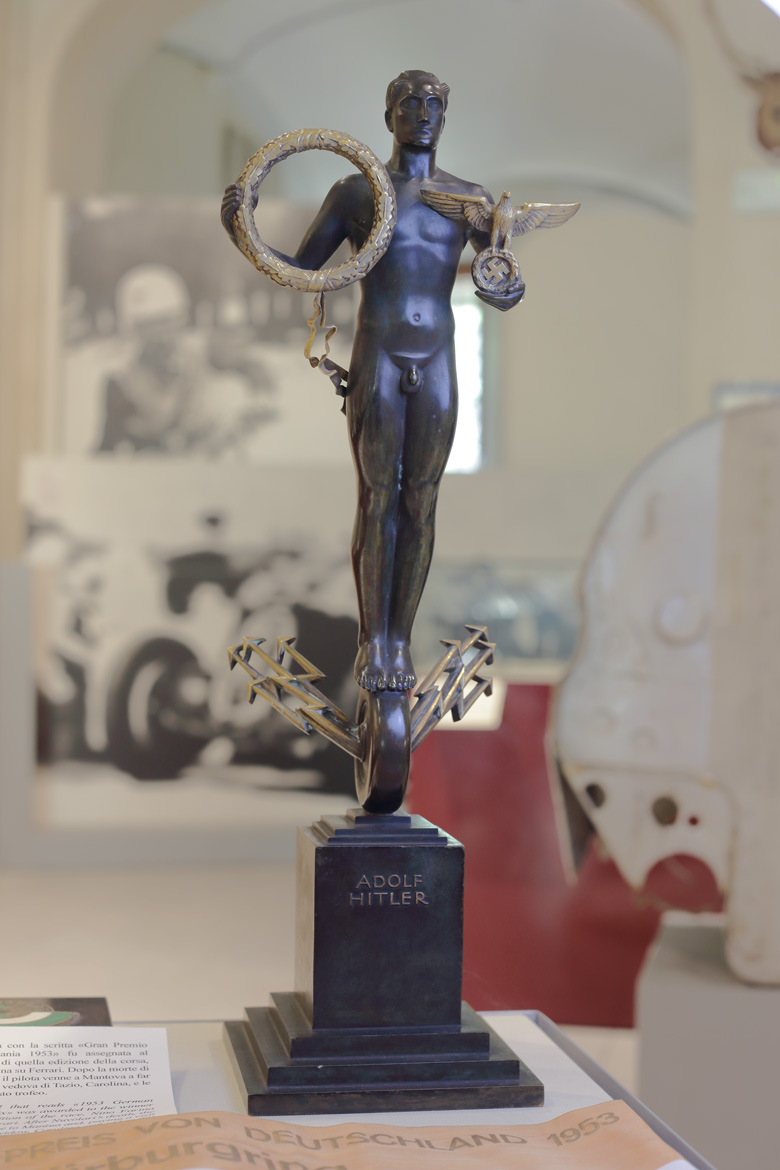

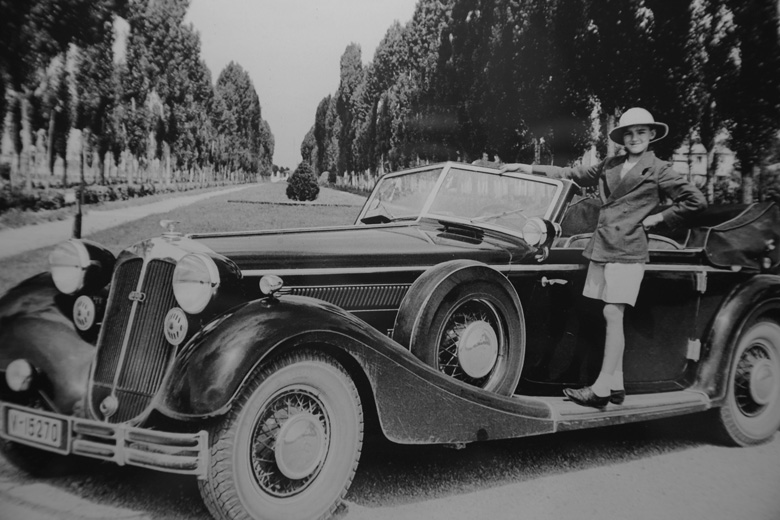
A little known fact about Nuvolari and the Vanderbilt Cup. The press convinced Nuvolari to sit in the cup after he won the 1936 race, as the cup was huge and he was quite small so with the cup in the cockpit of his Alfa he got in it with his legs hanging over the side. (I have a photo of this.) The cup was solid silver and it warped into an oval from Nuvolari’s weight. I saw the cup at Hershey sometime in the 90s and sure enough the mouth of the cup was a gentle oval shape. The during the silly CART vs Indycar war CART bought the cup to establish another Vanderbilt Cup event and had the cup repaired back to the original shape from what I was told.
Tazio, a mans man…great read.
I grew up in Australia with knowledge of Nuvolari! My father saw him win the Ulster TT in the K3 Magnette (of which a few ended up in Australia and which sound divine).
Everything I’ve read puts him right up there. Surtees is the only comparable figure in motor sport as he also succeeded so much in 4 wheels as well as on 2 wheels. Nuvolari must have been just amazing.
Great article and it provides yet another “if ever we get there” location! Thank you….
My favorite driver of all time – can’t wait to see the museum!
we had entered the ‘circuito di te’ to be run up and down the wide streets in front of the palazzo di te in mantova a couple years ago. we showed up with our ’55 t-bird but couldn’t find anything happening. karen emailed the organizer. the event had been cancelled–but because they thought we were coming from america they figured we weren’t really gonna show up so they never bothered to let us know! abashedly they were kind enough to arrange trucking of the t-bird back to the Bergerac area while we drove our rental car back to France. there used to be pix of cars racing there 5 years ago or so, with the traditional kid on a bicycle watching from the runoff area at the end of the straight!
I thought that Nuvolari decided to continue on after Enzo begged him to stop (at Bologna) in the 48 Mille Miglia? Didn’t he continue on only to have the car breakdown on the next leg at Villa Ospizio (where he was carried into a church to rest) or is that Mille Mythology?
It is always difficult looking back in 2020 to appraise a man who passed away more than sixty years ago, and few alive today saw him race, but the film recordings, the photos and the results leave little doubt that Nuvolari was the greatest of his generation, and may prove to be the greatest of all time.